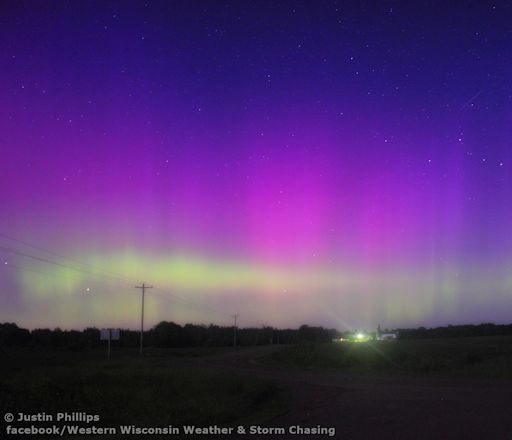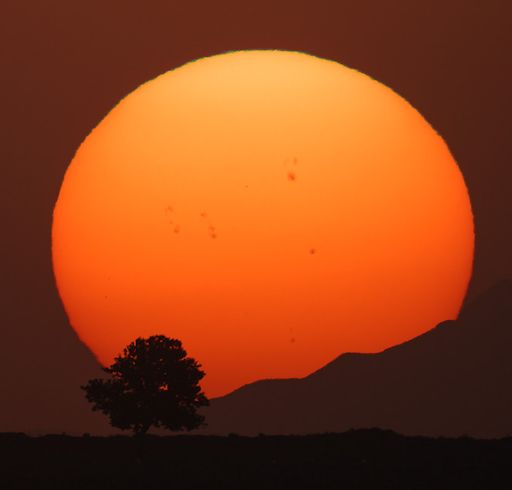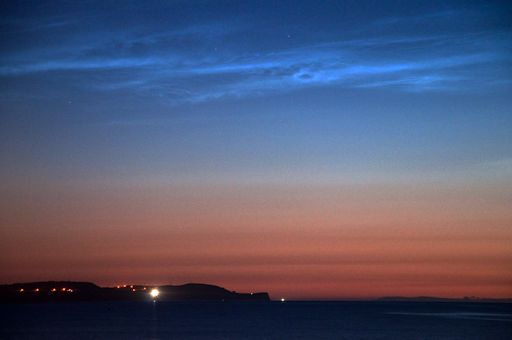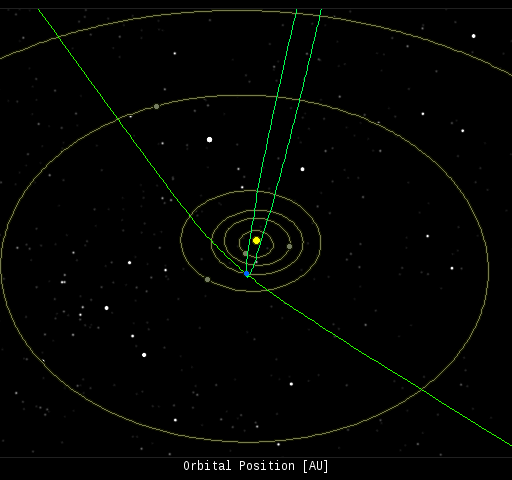When is the best time to see auroras? Where is the best place to go? And how do you photograph them? These questions and more are answered in a new book, Northern Lights - a Guide, by Pal Brekke & Fredrik Broms. | | |
FATHER'S DAY AT THE EDGE OF SPACE: Would you like to send your dad to the Edge of Space? He can't go, but his picture can. Using a suborbital helium balloon, the students of Earth to Sky Calculus will fly the image of your choice to 120,000 ft and photograph it against the curved limb of the Earth. The returned photo (example) makes a great Father's Day gift. The flight fee is $49.95, and profits support student research. Contact Dr. Tony Phillips for details.
WEEKEND GEOMAGNETIC STORM: High-latitude sky watchers should be alert for auroras on June 8th and 9th as Earth passes through the wake of a CME, which struck on June 7th. Initially, the CME's impact was was weak, but as the 7th turned into the 8th a G2-class geomagnetic storm developed, sparking auroras across Canada and many northern-tier US states. "For about 10 minutes the pinks were just incredible," says Justin Phillips, who sends this picture from New Auburn, Wisconsin:

Auroras were also sighted in the USA in Maine, Minnesota, Washington, South Dakota, New York, and Michigan. About 10,000 miles away, sky watchers spotted the same shades of pink over New Zealand, so this was truly a global event.
The source of the CME was a magnetic filament on the sun, which erupted on June 4th. The explosion was not squarely aimed at Earth, but the glancing blow it provided three days later was enough to spark the ongoing display. NOAA forecasters say CME effects could persist until June 9th with a 25% chance of continued geomagnetic storms. More auroras are in the offing.... Aurora alerts: text, voice
Realtime Aurora Photo Gallery
CHANCE OF FLARES: NOAA forecasters estimate a 35% chance of M-class solar flares and a 10% chance of X-flares on June 8th. Why? The answer lies in the sunset:

Ehsan Rostamizadeh took the picture last night in Kerman, Iran. It shows a setting sun dotted with dark spots. Three of the sunspots pictured above have unstable magnetic fields that harbor energy for M-class solar flares, and one of them, AR2080, poses a threat for even stronger X-flares. Because the sunspots are all facing Earth, any flares this weekend will likely be geoeffective. Solar flare alerts: text, voice
Realtime Space Weather Photo Gallery
NOCTILUCENT CLOUDS INTENSIFY: NASA's AIM spacecraft saw the first wispy noctilucent clouds (NLCs) of the 2014 summer season on May 24th. Since then NLCs have begun to intensify around the Arctic Circle and descend to lower latitudes. On June 6th, Noel Blaney spotted a bank of the electric-blue clouds over Bangor, Northern Ireland:

"I witnessed this nice early-season noctilucent cloud display over Belfast Lough at 2am," says Blaney. "These are my first proper images of NLCs!"
A few hours later, Lance Taylor saw more NLCs over Edmonton, Alberta. "This was my first sighting of the season - and I have been watching for them for the past two weeks now," he says.
Seeded by meteor smoke and boosted by the climate-change gas methane, noctilucent clouds have been spreading beyond the Arctic. In recent years, they have been sighted as far south as Colorado and Utah. Observing tips: Look west 30 to 60 minutes after sunset when the Sun has dipped 6o to 16o below the horizon. If you see luminous blue-white tendrils spreading across the sky, you may have spotted a noctilucent cloud.
Realtime Space Weather Photo Gallery
Realtime Comet Photo Gallery
Realtime Meteor Photo Gallery
Every night, a network of NASA all-sky cameras scans the skies above the United States for meteoritic fireballs. Automated software maintained by NASA's Meteoroid Environment Office calculates their orbits, velocity, penetration depth in Earth's atmosphere and many other characteristics. Daily results are presented here on Spaceweather.com.
On Jun. 8, 2014, the network reported 69 fireballs.
( 69 sporadics)

In this diagram of the inner solar system, all of the fireball orbits intersect at a single point--Earth. The orbits are color-coded by velocity, from slow (red) to fast (blue). [Larger image] [movies]
Potentially Hazardous Asteroids (
PHAs) are space rocks larger than approximately 100m that can come closer to Earth than 0.05 AU. None of the known PHAs is on a collision course with our planet, although astronomers are finding
new ones all the time.
On June 8, 2014 there were 1485 potentially hazardous asteroids.
Notes: LD means "Lunar Distance." 1 LD = 384,401 km, the distance between Earth and the Moon. 1 LD also equals 0.00256 AU. MAG is the visual magnitude of the asteroid on the date of closest approach. | | The official U.S. government space weather bureau |
| | The first place to look for information about sundogs, pillars, rainbows and related phenomena. |
| | Researchers call it a "Hubble for the sun." SDO is the most advanced solar observatory ever. |
| | 3D views of the sun from NASA's Solar and Terrestrial Relations Observatory |
| | Realtime and archival images of the Sun from SOHO. |
| | from the NOAA Space Environment Center |
| | the underlying science of space weather |

